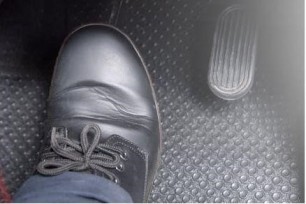Blog Details - Magma HDI

What to do when the brakes fail suddenly while driving 25th November 2021
How well are you prepared for a situation like a brake failure? Well, most people can't imagine the correct answer. Imagine you are driving comfortably, and your eyes are engaged on the road. Then, when you approach traffic or a speed breaker, you hit the brake pedal, but your car doesn't slow down. You repress harder this time, but you are still speeding. Are brake failures terrifying to even think about? It's best to prepare for such panic scenarios.
Brake failures usually are not recognized beforehand; they hit you when you are in motion. It can be a panicking situation leaving the driver clueless and inviting a potential threat to his life.
In today's post, we'll talk about the dos and don'ts to stop your car safely when the brakes fail.
What to do?
1. Don't lose your cool:
We understand it's easier said than done but try not to panic. This will only put you and the passengers in unnecessary danger at the time of an actual stressful situation.
2. Go easy on the throttle:
Immediately take your foot off the accelerator pedal. You don't want to speed up even by mistake as it can only worsen the situation and make the vehicle handling uncontrollable.
3. Pump the brakes:
Press the brake pedal multiple times to generate enough pressure in the hydraulic system of the brakes. This can miraculously work out, and you'll be able to halt your car even after brake failures.
4. Lower the gears:
If the pumping doesn't help, shift into a lower gear gradually. Doing this increases the mechanical resistance, referred to as engine braking.
5. Engage handbrakes:
Some cars can restrict you from shifting to extra-low gear until the car has slowed sufficiently. In such cases, handbraking comes in. When you engage the handbrakes, do so gradually. If you suddenly apply them, your car can go skidding to make the situation worse.
6. Turn on the AC to the maximum:
Turning the AC to the max will take a few kilowatts of power. Turning on all extras will cause resistance to the alternator that can help you slow down.
Other dos:
● Keep your vision on the road at all times.
● Turn on the hazard lights. This will notify other drivers that you're in an emergency.
● If you notice an uphill road, use it to your advantage. Taking your vehicle to it will help you curb the speed.
● Wear your seatbelt at all times.
● Follow the speed limits on all roads.
Now that you know what to do. Let’s discuss the don'ts real quick:
● Do not continue driving on cruise control.
● Do not cut the ignition or change the gear to neutral as you will lose the full control.
● Do not shift from higher gear to low gear drastically. The same goes for handbrake. Do not engage it at once. This can cause skidding.
● DO NOT shift to reverse gear. This will completely shatter the gearbox, and further will not allow you to downshift.
● Don't move sideways with a speeding vehicle. Yes, it increases friction, but you run the danger of spinning out.
● Do not run into a concrete wall or a block to crash stop; go for shrubs and bushes.
When such situations arise, you are in danger and the rest of the commuters around. Therefore, you must think rationally and make decisions. You and your car can sustain damage in such scenarios; having reliable car insurance at your disposal will help you recover from it. If you have one, check for your car insurance renewal before you hit the roads. Car insurance renewal is a ticket for extended protection of your prized possession.
Also, don't ever overlook the necessity of having your car serviced at regular intervals so that critical safety systems, such as braking, are well maintained.
Car insurance renewals are possible online now. Click HERE to do it right now.
Disclaimer: The information provided above is for illustrative purposes only. To get more details, please refer to policy wordings and prospectus before purchasing a policy.

